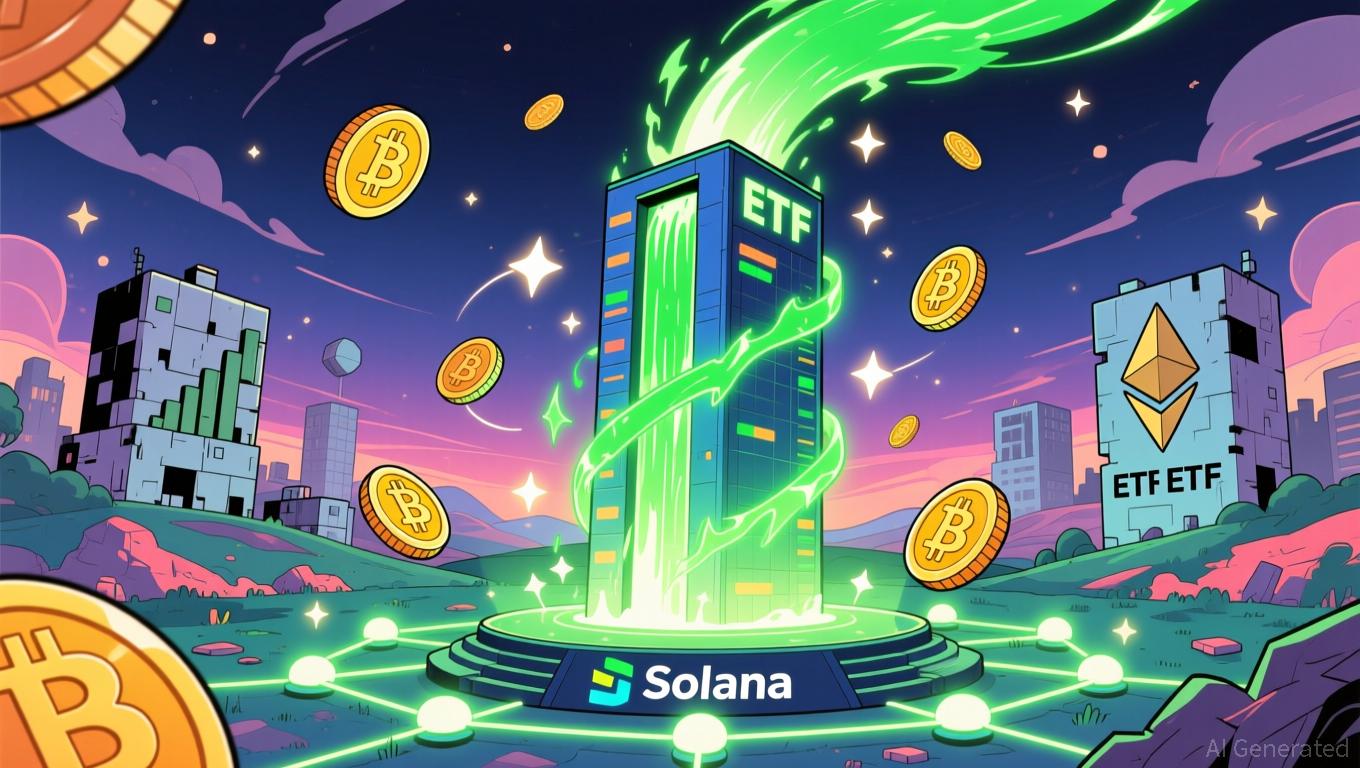Internet Computer Experiences Rapid Price Jump: Is This Uptrend Built to Last or Just a Brief Spike?
- Internet Computer (ICP) surged over 30% in late 2025 due to protocol upgrades and enterprise partnerships with Microsoft Azure and Google Cloud. - Technical advancements like Caffeine AI and Chain Fusion aim to enhance decentralized AI and cross-chain interoperability with Bitcoin , Ethereum , and Solana . - Despite $237B TVL claims, DApp activity dropped 22.4%, raising questions about real-world adoption and data reliability. - Regulatory risks and speculative trading volume spikes highlight sustainabil
Protocol Advancements: Ushering in Decentralized AI and Enhanced Scalability
ICP’s latest protocol improvements have established it as a leader in decentralized AI systems. The introduction of the Caffeine AI development suite in July 2025, which empowers developers to create blockchain apps using natural language or image prompts, has been recognized as a transformative step
Upgrades such as Fission (for scalability), Stellarator (for sharding), and Chain Fusion (enabling interoperability with
Enterprise Collaborations: Connecting Blockchain with Cloud Services
ICP’s alliances with Microsoft Azure and Google Cloud have been instrumental in promoting real-world use. These collaborations tackle key business challenges like interoperability and scalability by facilitating smooth data and asset exchanges between ICP and leading blockchains
Nevertheless, the effect of these partnerships on ICP’s network activity is mixed. While institutional enthusiasm for AI-powered infrastructure has pushed Total Value Locked (TVL) to $237 billion
On-Chain Data: Advancements and Contradictions
ICP’s blockchain data reveals both progress and contradictions. In the third quarter of 2025, DeFi transactions on ICP increased by 15%, aided by Chain Fusion’s cross-chain features
Network fees increased a hundredfold in Q3 2025, pointing to a trend toward larger-value transactions rather than widespread user participation. At the same time, active wallet numbers reportedly surpassed 1.2 million, though this lacks third-party confirmation. Trading volumes driven by speculation jumped 261%, reflecting strong market interest but raising doubts about whether this signals real-world use or just short-term trading
Sustainability: Balancing Innovation and User Adoption
ICP’s continued upward trend depends on its ability to convert technical breakthroughs into actual user expansion. Although protocol enhancements and business partnerships have strengthened ICP’s infrastructure, the fall in DApp engagement and dependence on speculative trading reveal ongoing obstacles. For example, the 22.4% reduction in DApp participation highlights the challenge of turning infrastructure gains into active users
Still, ICP’s hybrid approach—combining blockchain’s resistance to censorship with the scalability of cloud infrastructure—positions it to benefit from the growing AI infrastructure sector
Conclusion: High Risk, High Potential
ICP’s recent rally is the result of a mix of technological innovation, enterprise integration, and speculative interest. While upgrades like Caffeine AI and Chain Fusion highlight ICP’s capacity to reshape blockchain infrastructure, declining DApp activity and regulatory risks temper expectations. Investors should consider the project’s ambitious goals alongside its present challenges in user growth and data transparency. At this stage, ICP remains a high-risk, high-reward proposition—its future will be determined by its ability to connect advanced infrastructure with widespread practical use.
Disclaimer: The content of this article solely reflects the author's opinion and does not represent the platform in any capacity. This article is not intended to serve as a reference for making investment decisions.
You may also like
Solana News Today: The Rise of Stablecoins Indicates Investors Are Favoring Stability Instead of Riskier Protocols
- USDC stablecoin surpassed Solana (SOL) in market cap, signaling a shift toward stablecoins over volatile protocols. - Solana Company reported $352.8M Q3 2025 net loss, driven by derivative liabilities and unrealized treasury losses. - USDC's growth stems from institutional partnerships, including Parfin and Orobit.ai, aligning with pro-crypto regulatory trends. - Coinbase's ETH-backed USDC loans and infrastructure expansion highlight stablecoin utility in bridging traditional and crypto finance. - Market

Solana News Today: Staking Drives Altcoin ETF Boom as Investors Look for Returns Outside of Bitcoin
- Solana ETFs attract $476M inflows since October 28, driven by staking rewards and lower fees compared to Bitcoin/Ethereum ETFs. - Bitwise's BSOL dominates with 89% of inflows, leveraging 0.20% fees and on-chain staking to generate returns for investors. - Despite ETF growth, Solana's price remains below key EMAs at $141, with analysts warning of potential support tests below $120. - Bitcoin/Ethereum ETFs face outflows as investors shift toward yield-generating altcoin products, signaling market strategy

Zcash Halving Scheduled for November 2025: How Supply Disruptions Are Influencing Institutional Crypto Investment Strategies
- Zcash's 2025 halving reduced block rewards by 50%, intensifying deflationary pressure and triggering a 750% price surge to $680. - Institutional investors like Cypherpunk and Grayscale allocated $287M to Zcash, citing its 3.5% inflation rate and privacy-focused proof-of-stake model. - Regulatory scrutiny labeled Zcash an "anonymity-enhancing asset," but optional privacy features and AI compliance tools help institutions navigate risks. - Market volatility and competition from newer privacy protocols pose
Zcash (ZEC) Price Rally: Is the Privacy-Focused Cryptocurrency Poised to Enter the Mainstream?
- Zcash (ZEC) surged 472% to $420, driven by institutional investments and regulatory clarity in 2025. - Grayscale and Cypherpunk Technologies allocated $137M and $150M to ZEC, citing its compliance-ready privacy model. - U.S. Clarity/Genius Acts enabled Zcash's selective transparency, bridging privacy with AML requirements for institutional adoption. - Regulatory risks like FinCEN's "mixer rule" and developer scrutiny persist, testing Zcash's balance between privacy and compliance. - Zcash's institutional